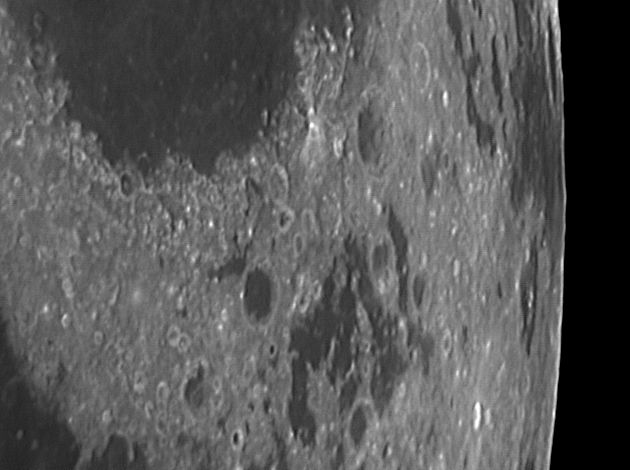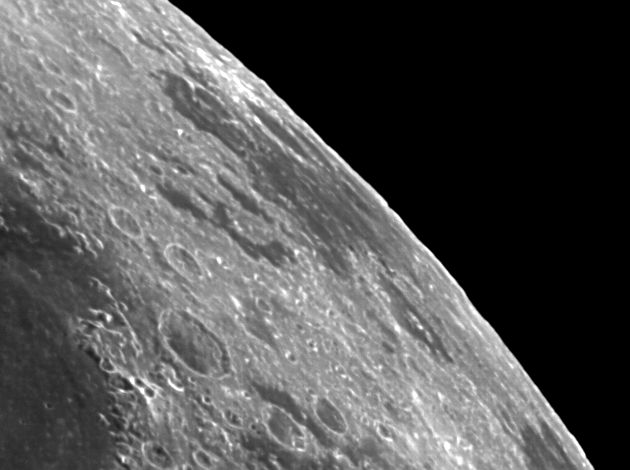

Mare Marginis is possibly one of the oldest mare on the Moon. It is well into the zone of librations, so it can only be seen when libration tips the Moon to the west.
Move your mouse over the picture to see the names of the various features.

At this time the libration was almost 4° and the mare is well shown. The dark areas to the west has no official name and was called Lacus Risus Felis by Charles Wood in his book The Modern Moon following a comment from E.A. Whitaker that it looks like the smile on the face of the Cheshire Cat in Alice in Wonderland (unfortunately I have just missed much of the right eye). Also in this area there are a number of lava-flooded craters. Neper with its ridge-like central mountain is nicely shown here; to the north of Mare Marginis is the 90 Km crater, Goddard.
A mosaic of this picture with one to the south can be seen here.
The scale markers are very approximately 100 Km north and west and apply near Condorcet.
The picture was taken with a ToUcam attached to my LX200 on 10th December 2005 at 17:23 UT,
when the Moon was 9.8 days old.
Date and Time: 10th December 2005, 17:23 UT
Camera: ToUcam 740K
Telescope: LX200 at prime focus with IR-pass filter
Capture: K3CCDTools. Low gamma, 1/33", 10% gain, 309 frames
Processing: Registax. 114 frames stacked. Wavelets 1-2 = 10

When this picture was taken the libration was even more favourable than above at 7° 19' in longitude and 2° 59' in latitude. The crater Jansky is undoubtedly in the picture but I cannot identify it for certain. The image appears very flat partly because the Sun is high in the lunar sky over most of this area and whatever shadows there are are coming towards the camera. Sunset here on Earth that night was at 20:20 UT so that the sky was still very bright.
The scale markers indicate north and east and apply near Neper. Please note that the markers do not represent any particular distance. Both distances and directions are very variable in pictures so near the limb, especially in the east-west direction that any real indication is hardly possible.
The picture was taken in infrared light using an Atik 1-HS camera attached to my LX200 on 9th June 2008 at 20:25 UT, when the Moon was 6.6 days old.
Date and Time: 9th June 2008, 20:25 UT
Camera: Atik 1-HS
Telescope: LX200 at prime focus with IR-pass filter
Capture: K3CCDTools. Low gamma, 1/250", 40% gain, 911 frames
Processing: Registax. 9 alignment points, 668 frames stacked, histogram 0-180, wavelets 1-2 = 10, unsharp mask 20, 5 (in PhotoImpact) Home Back to NE Quadrant